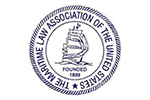Wrongful Death Attorneys
Punitive Damages Now Available for Failure to Pay Maintenance and Cure
By John Merriam
The U.S. Supreme Court overruled the Ninth Circuit and several other federal circuit courts, holding that punitive damages may be awarded “for the willful and wanton disregard of the maintenance and cure obligation”. Atlantic Sounding v. Townsend , 557 U.S. ___, 129 S.Ct. 2561, 2009 AMC 1521 (2009).
Until Miles v. Apex , 498 U.S. 19 (1990), courts were divided over the availability of punitive damages for the failure to pay maintenance and cure. After Miles , every federal circuit court that took up the issue ruled that punitive damages were not available, even though Miles was a wrongful death case that did not specifically address maintenance and cure. The Ninth Circuit fell in line, proclaiming that punitive damages were not available in maintenance and cure cases. Glynn v. Roy Al Boat Management , 57 F.3d 1495 (9 th Cir. 1995). The Eleventh Circuit, with seeming reluctance, bucked this trend. It reasoned that since Miles did not involve a maintenance and cure issue, it was bound by pre-Miles authority in the Circuit which specifically did allow punitive damages for the willful withholding of maintenance and cure, citing Hines v. J. A. LaPorte , 820 F.2d 1187 (11 th Cir. 1988). Atlantic Sounding v. Townsend , 496 F.3d 1282 (11 th Cir. 2007).
Edgar Townsend worked on a tugboat in Florida. He claimed an injury on the job and that Atlantic Sounding refused to pay him maintenance and cure. Both sides brought lawsuits against the other in federal court. The trial court consolidated the cases and ruled that Townsend could claim punitive damages for the arbitrary and willful failure to pay maintenance and cure. The Eleventh Circuit affirmed and the Supreme Court granted certiorari. 557 U.S.___, 2009 AMC at 1522-23.
There were strange bedfellows in the majority for this 5-4 decision. Justice Thomas wrote the opinion, in which he was joined by the so-called liberal wing of the Court, Justices Stevens, Souter, Breyer and Ginsburg. Thomas went back to before the U.S. Constitution was adopted, citing precedent from colonial and English courts, to reason that punitive damages have long been available under the general maritime law. He distinguished Miles , supra , because it was a case for wrongful death that professed a desire for general maritime law principles to be uniform with statutory remedies under the Jones Act and DOHSA (Death on the High Seas Act)-both of which were enacted only ‘recently’, in 1920. “There is no evidence that claims for maintenance and cure were excluded from the general admiralty rule (by passage of the Jones Act) . . . The pre-Jones Act evidence indicates that punitive damages remain available for such (general maritime law) claims under the appropriate factual circumstances.” Atlantic Sounding v. Townsend , 2009 AMC at 1529.
The opinion concludes with the observation that the Court was not deciding whether or not to put a cap on the amount of punitive damages allowed “for the willful and wanton” failure to pay maintenance and cure, as it had in other cases involving punitive damages. See , Exxon Shipping Co. v. Exxon , 554 U.S. ___ (2008). 2009 AMC at 1537-38, n. 11. As of now, in theory at least, there is no limit and seamen can seek , e,g., $1 million in punitive damages for the wrongful withholding of $20 in maintenance. But see, e.g., State Farm v. Campbell, 538 U.S. 408, 425 (2003) (“(F)ew awards exceeding a single-digit ratio between punitive and compensatory damages, to a significant degree, will satisfy due process”.).
Justice Alito wrote the dissent, in which he was joined by Chief Justice Roberts and Justices Scalia and Kennedy. He begins with a false premise:
“The type of maintenance and cure claim that is most likely to include a
request for punitive damages is a claim that a seaman suffered personal
injury as a result of the willful refusal to provide maintenance and cure.”
2009 AMC at 1540 (emphasis added). Not so. In this practitioner’s experience the rule is that economic hardship and the inability to obtain medical attention are the usual results from the denial of maintenance and cure. Cases where actual ‘personal injury’ occurs are the exception. He goes on to state that when bringing a case for maintenance and cure,
“. . . a seaman asserting a Jones Act claim must show his employer was
negligent . . . while a seaman proceeding under general maritime law
may recover compensatory damages without establishing fault. . . .
It appears that any personal injury maintenance and cure claim in
which punitive damages might be awarded could be brought equally
under general maritime law or the Jones Act. . . . I therefore turn to
the question of whether punitive damages may be awarded under the Jones Act.”
Id. Huh? Who suggested the availability of punitive damages under the Jones Act? Justice Alito then proceeds from faulty premise to faulty conclusion:
“The Jones Act is significant because it created a statutory claim
that is indistinguishable for present purposes from a general
maritime law claim based on personal injury and because this
statutory claim does not permit the recovery of punitive damages.”
2009 AMC at 1542 (emphasis added). By equating the general maritime law with the Jones Act, and the earlier language that general maritime law recoveries may be obtained without establishing fault, this suggests that compensatory (as opposed to punitive) damages may be recovered under the general maritime law any time that a seaman entitled to maintenance and cure is not paid. Do the dissenters really mean to say this, or is Justice Alioto merely torturing logic to make his point?
In another display of suspect reasoning, Justice Alito finally gets to the basic issue of the case, treating it almost as if dealing with an aside:
“There is one remaining question in this case, namely, whether punitive
damages are permitted when a seaman asserts a general maritime law
maintenance and cure claim that is not based on personal injury.”
2009 AMC at 1544. He answers that question by stating that the right to maintenance and cure is “quasicontractual” in nature, and that “recovery should be governed by the law of quasi-contract”, id . at 1545, citing to the Restatement (Second) of Contracts! His argument, apparently, is that the failure to pay maintenance and cure should be treated as a breach of contract action, where punitive damages are not permitted. Justice Alito supports this assertion by quoting Cortes v. Baltimore Insular Line , 287 U.S. 367 (1932). Cortes was the case that established the failure to pay maintenance and cure as a tort separate from the underlying obligation to pay it in the first instance It did describe maintenance and cure as “contractual in origin”, but Cortes was not a contract case and does not stand for the proposition that it is cited for.
At best, Justice Alito’s dissent exhibits a fundamental misunderstanding of the maritime law. At worst, it is intellectually dishonest.
The majority opinion leaves some questions unanswered. First, are punitive damages available, in extreme circumstances, for unseaworthiness-against the vessel owner, as opposed to a claim for negligence against the employer under the Jones Act? Dictum in the opinion suggests that the answer is ‘yes’.
“‘The general maritime law has recognized . . . for more than a century’
the duty of maintenance and cure and the general availability of punitive
damages.”
2009 AMC at 1535 (citations omitted). In the above quotation substitute ‘the duty to provide a seaworthy vessel’ for ‘the duty of maintenance and cure’, and punitive damages become available for claims of unseaworthiness.
Second, are damages for loss of consortium available when a seaman is injured as a result of the vessel’s unseaworthiness under the general maritime law? This is more of a stretch. The Supreme Court ruled out damages for loss of consortium under the general maritime law in Miles v. Apex , supra , but that was a wrongful death case. For injury not resulting in death, the availability of loss of consortium damages, theoretically at least, is an open question.
The third question involves the standard of proof required for an award of attorney fees following the failure to pay maintenance and cure. At present, an award of attorney fees requires a motion for ‘reasonable (hourly) attorney fees’, which is rarely granted, showing the hours expended and services performed. To be awarded ‘reasonable attorney fees’, the seaman has to show that the failure to pay maintenance and cure was “callous” or “willful and persistent”. Vaughan v. Atkinson , 369 U.S. 527 (1962). That sounds nearly identical to the “willful and wanton” standard established by the Court for an award of punitive damages in the instant case. Townsend , 2009 AMC at 1538. Having two types of damages-or ‘penalties’, if you will-available for the same conduct seems redundant to this practitioner. It is here suggested that if attorney fees were treated as a compensatory damage to the seaman, rather than as a ‘punishment’ against the vessel owner, a lower ‘negligence’ standard would apply.
There is dictum supporting this suggestion in the majority opinion. Justice Thomas cites an early maritime case where attorney fees were awarded as compensatory damages, under a lower standard of proof, “as a remuneration for expenses incurred, or losses sustained, by the misconduct of the other party.” Boston Mfg. Co. v. Fiske , 3 F. Cas. at 957 (No. 1681) (CC Mass. 1820) (Justice Story). 2009 AMC at 1532. Indeed,
“The negligent denial of maintenance and cure may also be the subject
of a Jones Act claim. See Cortes v. Baltimore Insular Line , 287 U.S.
367 (1932).”
2009 AMC at 1536 (emphasis added). If the seaman negligently denied maintenance and cure has to pay a lawyer to get it for him or her, the fees paid are a consequence of the negligent denial and should be reimbursed as compensatory damages.
There is a difference between ‘reasonable attorney fees’, designed to compensate the seaman’s lawyer for his or her time, and ‘compensatory attorney fees’, designed to compensate the seaman for attorney fees the seaman paid in order to establish an entitlement to maintenance and cure. For example: A seaman who is wrongfully denied maintenance and cure hires a lawyer on a 1/3 contingent fee agreement. The lawyer’s standard rate, when billing by time expended, is $200/hour. The lawyer puts 20 hours into the case and is successful in getting $10,000 of back maintenance and cure benefits. The seaman is obligated to pay the lawyer $3,333.33 from his award, to his or her lawyer, as the contingent fee. The seaman therefore has consequential damages of $3,333.33 and should be ‘compensated’ in that amount if the vessel owner was negligent in refusing to pay maintenance and cure. If, on the other hand, the seaman can show that the vessel owner was “willful and persistent” in refusing to pay maintenance and cure, the seaman’s lawyer would be entitled to $4,000 (20 hours x $200/hour) as a reasonable attorney fee, which would substitute for any contingent fee owed to the lawyer by the seaman.
According to the dissenters, compensatory damages are available to the seaman without a showing of fault any time maintenance and cure is wrongfully withheld from a seaman, even if the vessel owner reasonably believed that it was not owing. 2009 AMC at 1540. It may be that attorney fees are recoverable in all maintenance and cure actions where benefits were initially denied, much like prejudgment interest. See Jordan v. Norfolk Dredging Co ., 223 F.Supp. 79 (E.D. Va. 1963).
Earlier in these pages the author described an effort to persuade the state courts of Washington to rule contrary to the federal Ninth Circuit. “Are Punitive Damages Available in State Court for the Failure to Pay Maintenance and Cure?” (Trial News October 2008). It is here confessed that, to the time that the Townsend opinion, supra , was released last summer, the effort described had yet to reach the appellate level, and nary a single Superior Court judge had been convinced to rule against brethren on the Ninth Circuit. Who knew that Clarence Thomas would swoop down from higher elevations to become a savior to seamen?
Eagle John Merriam is a sole practitioner at Seattle’s Fishermen’s Terminal, who restricts his practice to the representation of maritime claimants for wages and injury.













